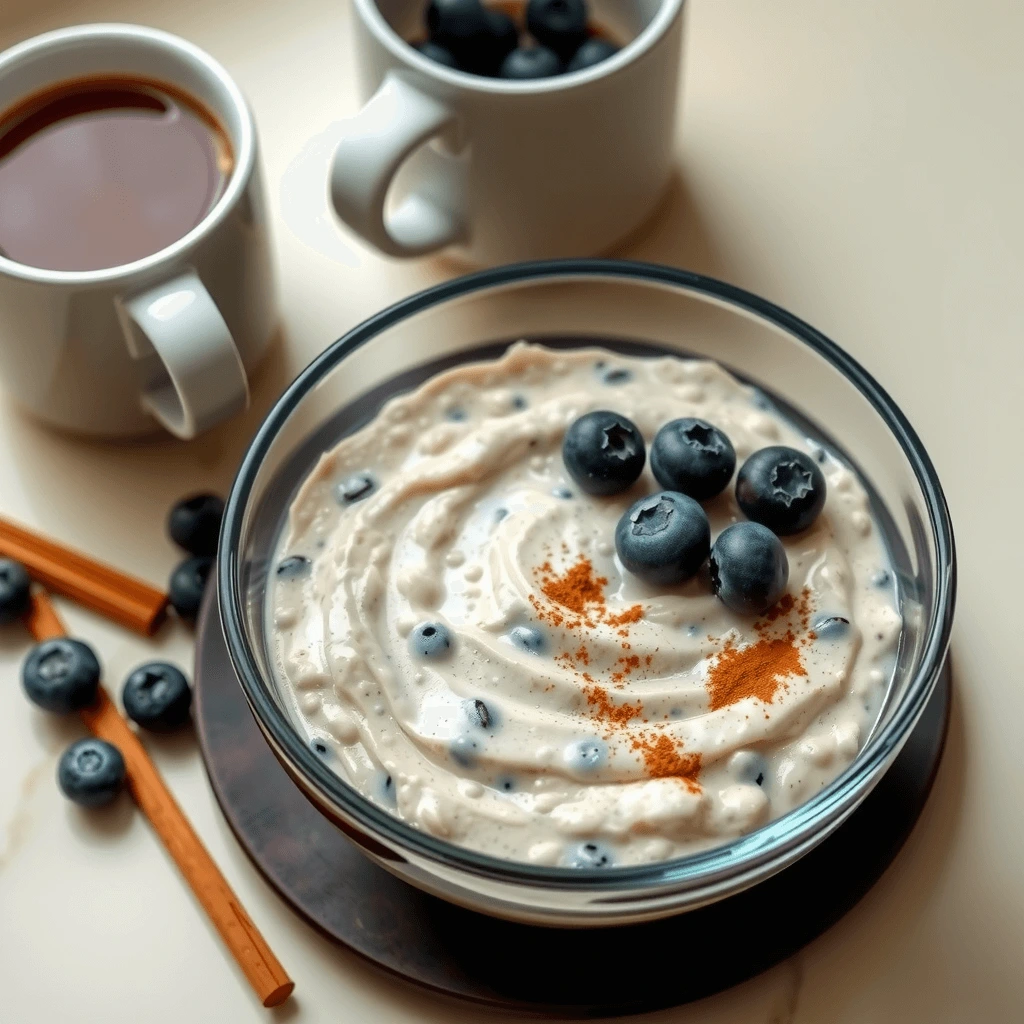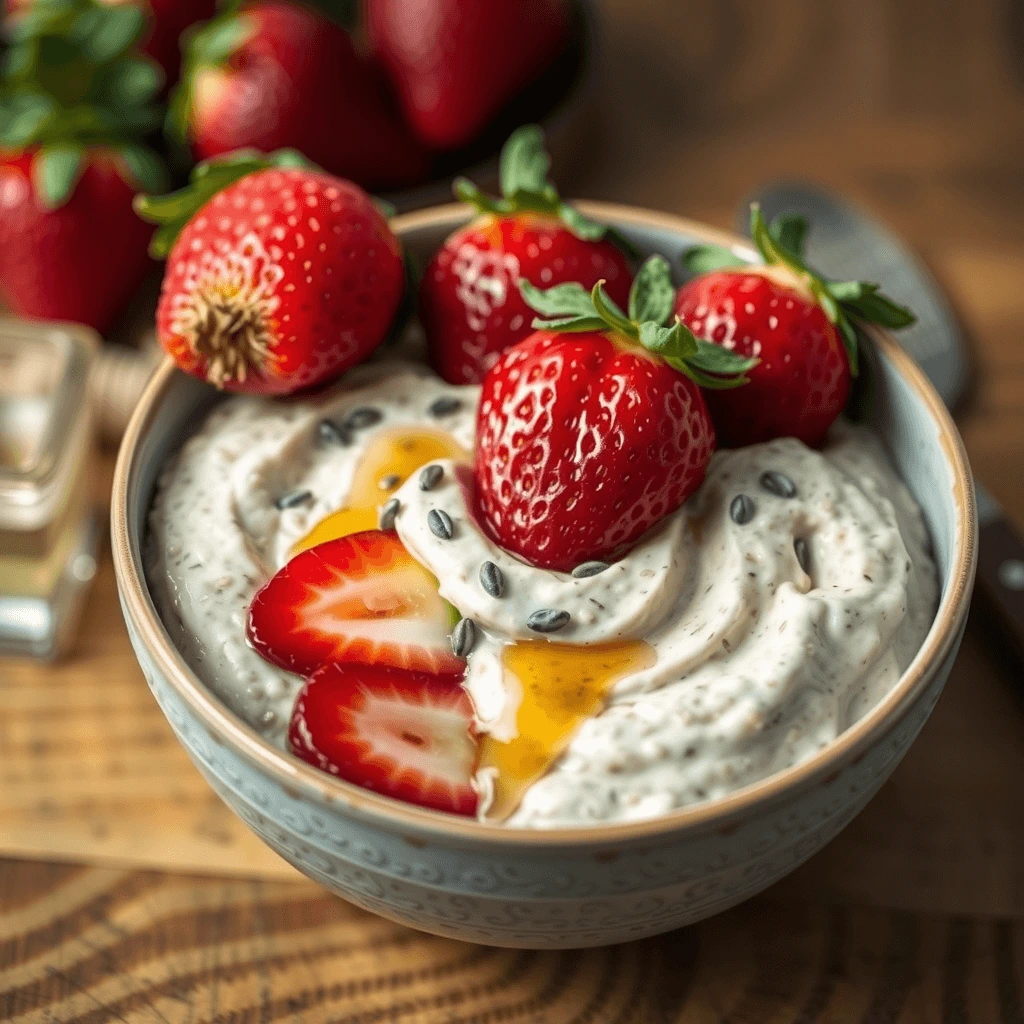There’s something deeply comforting about a breakfast that waits for you, especially when it’s creamy, nourishing, and ready the moment you are. That’s exactly why overnight oats have captured hearts (and stomachs) around the globe. Whether you’re rushing out the door or savoring a peaceful morning, these oats are a partner in your daily rhythm. Let’s walk through exactly how you can create the creamiest overnight oats, layering texture, flavor, and convenience into every spoonful.
Why You’ll Love Overnight Oats Beyond Convenience
- Your morning pace: Constantly hustling? Overnight oats wake up ready. You just grab and go, no heat needed.
- Texture matters: That velvety mouthfeel is deeply satisfying, it elevates oats from simply “healthy” to “deliciously indulgent without the guilt.”
- Nutrition as a bonus: Fiber, protein, and slow-release energy, all packed in one jar.
This isn’t a rigid formula; think of it as craftsmanship. You’re designing your ideal breakfast, one creamy layer at a time.
What Makes Oats “Overnight” and Why It Works
At its core, overnight oats are just raw oats (typically rolled oats) soaking in liquid until they soften, no cooking, no fuss. The real magic lies in these points:
- Hydration without heat: Instead of simmering, cold soaking lets the oats gently absorb liquid.
- Flavor fusion: As the oats soften, they marry with every flavor in the mix, milk, yogurt, spices, until each bite is concentrated goodness.
- Daily freedom: When mornings are packed, this eats-up-time breakfast stands ready, giving you space to focus on what really matters.
Why Creaminess Changes Everything

Talking purely texture, creamy oats create:
- Satiety: A rich, smooth spoonful feels more filling, savings on mid-morning hunger pangs.
- Taste enhancement: Creamy oats let flavors settle in smoothly and stay with each bite.
- Emotional comfort: There’s something deeply soothing about a soft, luxuriant bite.
You’re not just fueling your day, you’re crafting a little moment of comfort before the world wakes up with you.
Your Key Ingredients for Next‑Level Creaminess
Your journey starts in the pantry and fridge. Here’s everything you need to think about, and how each makes your oats silkier:
| Ingredient | Why It Matters | Creaminess Tip |
| Rolled oats | Base that gets tender overnight | Skip instant (too mushy) and steel-cut (too chewy) |
| Milk (dairy or alt.) | Adds fluidity and richness | Whole or plant-based like oat/soy is best |
| Greek yogurt | Gives protein, tang, and extra thickness | Full-fat plain yogurt for velvety body |
| Chia seeds | Natural thickener, adds texture | Use sparingly—around 1 tsp—to avoid spongey oats |
| Natural sweetener | Just enough sweetness to please the palate | Use maple syrup or honey; add gently |
Step‑by‑Step: Your Creamiest Overnight Oats
Step 1 – Pick the Right Oats
You’ll want classic rolled oats, because:
- They’re soft enough to absorb liquid without becoming gummy.
- Steel-cut remain too firm without cooking.
- Instant oats collapse into mush.
Step 2 – Perfect the Ratio
A great starting point (adapt to your preference):
- ½ cup rolled oats
- ½ cup milk (any kind you love)
- ¼ cup Greek yogurt
- 1 tsp chia seeds
- A drizzle of honey or syrup, if you like it sweet
Step 3 – Mix Thoughtfully
Use a jar or container with a tight-fitting lid:
- Combine the oats, milk, yogurt, and chia seeds.
- Stir well so that the ingredients meet evenly, no dry pockets allowed.
- Add sweetener if desired, but go easy; you can always sweeten later.
Step 4 – Chill Time
- Seal the container and refrigerate for at least 6 hours, overnight (8–12 hours) is ideal.
- In the morning, stir well. You’ll be greeted with a luscious, dreamy consistency.
Elevate Your Oats with Toppings & Mix‑Ins

Once you’ve nailed the creamy foundation, personalize it! Here’s how:
Fruits for Vibrancy
- Berries, tartness gives contrast
- Banana slices, for natural sweetness
- Mango or peaches, for sunny tropical vibes
Nuts, Seeds & Spreads
- Chopped almonds or walnuts, for crunch and depth
- A swirl of peanut butter or almond butter, for extra silkiness
- Flax or hemp seeds, for an extra fiber punch
Delicious Flavor Combos
- Banana Bread Bliss
- Mash half a banana, a dash of cinnamon, a few walnut pieces
- Berry Cheesecake Twist
- A spoonful of soft cream cheese, a drop of vanilla, and fresh berries on top
- Chocolate Dream Jar
- Cocoa powder mixed into the base, sliced banana, and a tiny dollop of nut butter
Watch for These Common Pitfalls
No matter how good your intentions are, a few obstacles can still derail your efforts:
- Wrong oats type: Instant oats go mushy; steel-cut stay too hard.
- No thickener: Skipping yogurt or chia leaves the texture watery.
- Too much liquid: Overdilutes your base, less is more.
- Insufficient soaking time: Skipping the chill phase gives you stiff oats.
Pro Tricks for Ultra‑Creamy Oats
- Mash in fruit: Banana or applesauce doubles as sweetener and thickener.
- Use full-fat options: Whole milk, coconut cream, or full-fat yogurt add richness.
- Extend the soak: Letting your jar chill for 24 hours makes every bite softer.
- Give it a quick blend: A brief blitz with a hand-held blender turns the mix into a mousse-like treat.
Frequently Asked Questions (Your Creamy Oats Cheat Sheet)
How long should you soak overnight oats?
At least 6 hours, though the best creamy texture shows up between 8–12 hours. If you’re not in a rush, let them rest up to 24 hours.
Can you make creamy oats without yogurt?
Absolutely! Swap yogurt with mashed banana, silken tofu, or a scoop of coconut cream.
Do overnight oats need cooking?
Not at all. The cold soak does the work, transforming oats into a soft, absorbent texture.
How long do they stay fresh?
Stored in the fridge with a sealed lid, oats stay fresh for 3 to 5 days. After that, texture softens, eat sooner for best taste.
Final Thoughts: Why These Oats Belong in Your Routine
This isn’t just meal prep, it’s a form of self‑care. You’re giving your future self a gift: a luxurious, wholesome breakfast waiting patiently in the morning. With creamy overnight oats, you’ll enjoy:
- A quick, indulgent start that fuels your day
- A nourishing hit of fiber and protein to help curb your appetite.
- A sensory treat that feels like a little hug in a jar
So here’s your invitation: Mix, chill, and taste the difference. Play with flavors, adjust textures to suit your mood, and take delight in a breakfast you look forward to.
Let’s hear from you!
Have a favorite flavor combo? A go-to topping? Or maybe you nailed the perfect ratio after a few tries? Drop your best variations and oat‑hacks below, let’s inspire each other to make mornings a little softer, creamier, and brighter.
Happy spooning!
LEAVE A COMMENT
There are no reviews yet. Be the first one to write one.

